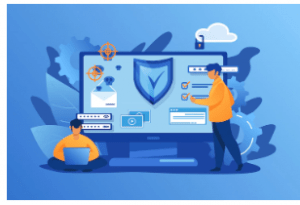Data protection is a major concern all over the world. Tech, banking, manufacturing, pharmaceutical, etc. – pick any industry and you will see how closely an organisation guards its data. When it comes to recruitment, data protection is not just something all candidates are entitled to. It is a prerequisite from the employer. Many countries have the ‘Data Protection Act’ which ensures that candidates are protected and the personal and professional information shared is not misused and mishandled. It is the responsibility of the employer to protect not only its employees but also any candidates that apply for a position with the company. Here are some of the strategies that can be used to protect candidates during the recruitment process:

- Protecting personal information
There must be a solid reason for requesting any personal information from the candidates. You must also mention that the information of the rejected candidates will either be deleted or saved for future use (with the candidate’s permission). Whether or not a candidate gets a job, you have to make it clear that their information will not be shared without their permission. This is not just for the candidate’s benefit but also for the organisation because it shows your commitment to maintaining the privacy of the candidates.
- Security measures for online applications
The simplest way to apply for a vacant position is through an online application. Most companies offer this facility on their website which is why you must protect your website from hacker attacks and any intrusions. All the candidate information must be processed securely and made available only to those who are directly involved in the hiring process. No other employee must have access to candidate information. Not only is it unethical but would also become a blot on the company’s credibility as an employer. All the information pertaining to candidates (both successful and unsuccessful) must be stored carefully. Utilise a well-established Applicant Tracking System (ATS) platform to manage applications. Ensure the platform uses secure login protocols and encrypts data transmission and storage. Regularly update the ATS software to address potential security vulnerabilities.

- Avoid asking for sensitive information
An ideal job application process is one which remains extremely relevant to the position in question. The application must revolve around the role and ask questions pertaining to the decided-upon criteria for the position. Sensitive information like religious beliefs or political preferences has no place in a job application unless they directly affect the role you’re hiring for. If the role demands such sensitive information to be divulged, make it clear to the candidate that it will not be disclosed unless absolutely necessary and even then, it will only be used for internal purposes.
- Email encryption
Protect all your internal and external communication with encrypted emails. All your outgoing emails, especially the ones with recruitment-related information must be encrypted. This makes it difficult for hackers and other intrusive individuals to access the information shared. There are times when a company’s own employees are involved in malicious practices and misuse protected information, making it all the more important to protect all your communications.

- Avoid disclosing personal information during references
When an employee leaves your company, chances are, they will list you as a reference. When you receive a call for verification, be sure you don’t disclose any private employee information. There is always a chance of fraud and an employee can be exploited through the misuse of personal information that you have shared. Organisations must never divulge private information of past or current employees.
- Keep your security software up to date
The latest antivirus software and security software must be installed to ward off any attacks. You must ensure that the software you are using is up-to-date and strong enough to keep all your information safe. Avoid putting highly sensitive information into emails and instead communicate it face to face.
- Awareness amongst the staff
Everyone on your recruitment team must be aware of the importance of data protection and how they can reduce any breach of security. Simple things like keeping all electronic devices that are network enabled protected with antivirus software goes a long way in protecting important information. Moreover, you must stress the importance of relaying private information via a channel that may not be completely secure. Face-to-face interaction is always better than an email or phone call when discussing sensitive information.
- Develop a comprehensive data protection policy
This policy should be a clear and accessible document outlining the types of data collected from candidates, the purpose of collecting it, and how it will be used, stored, and disposed of.

- Delete ex-employee records
Unless an employee has committed fraud against the company, there is no need to keep their records after a certain period of time. Delete all records of ex-employees so there is no way they can be leaked or misused.
It is the responsibility of the management that employee and candidate records are handled with care and that a certain level of security is provided to them. Any neglect could result in the misuse of information by a third party. Remember, technology has been a boon for business development but it comes with its own shortcomings and risks. As an employer, it is up to you to set and maintain security standards for data protection.
- Beware of phishing attempts
Educate candidates about phishing scams and advise them to only submit applications through official company channels. Avoid requesting resumes or personal information through emails or unverified platforms. Implement email authentication protocols to identify and filter out potential phishing attempts.







